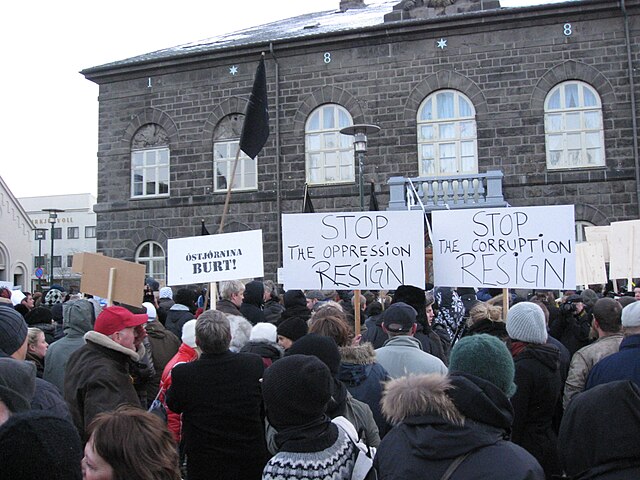The Icesave dispute was a diplomatic dispute among Iceland, the Netherlands and the United Kingdom which began after the privately owned Icelandic bank Landsbanki was placed in receivership on 7 October 2008. As Landsbanki was one of three systemically important financial institutions in Iceland to go bankrupt within a few days, the Icelandic Depositors' and Investors' Guarantee Fund had no remaining funds to make good on deposit guarantees to foreign Landsbanki depositors who held savings in the Icesave branch of the bank.
Geir Haarde and Gordon Brown in happier times. This meeting, at 10 Downing Street on 24 April 2008, was the only time the two men had met prior to the Icelandic financial crisis. Even in April, the problems of the Icelandic banking sector were one of the topics of discussion between the two Prime Ministers.
Alistair Darling, UK Chancellor of the Exchequer during the Icesave dispute
Over 80,000 people signed an online petition against Britain's use of "anti-terrorism legislation" against Landsbanki, under the theme "Icelanders are NOT terrorists". Many sent in satirical images such as this one as part of the protest.
2008–2011 Icelandic financial crisis
The Icelandic financial crisis was a major economic and political event in Iceland between 2008 and 2010. It involved the default of all three of the country's major privately owned commercial banks in late 2008, following problems in refinancing their short-term debt and a run on deposits in the Netherlands and the United Kingdom. Relative to the size of its economy, Iceland's systemic banking collapse was the largest of any country in economic history. The crisis led to a severe economic slump in 2008–2010 and significant political unrest.
Prime Minister of Iceland Geir H. Haarde speaks with reporters on 27 October 2008.
The value of the OMX Iceland 15 from January 1998 to October 2008
Some of the 6000 protesters in front of the Alþingishús, seat of the Icelandic parliament, on 15 November 2008.






